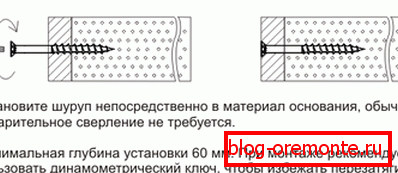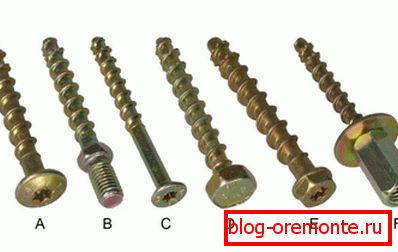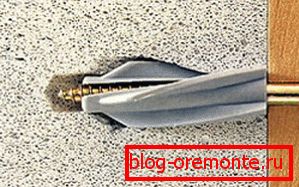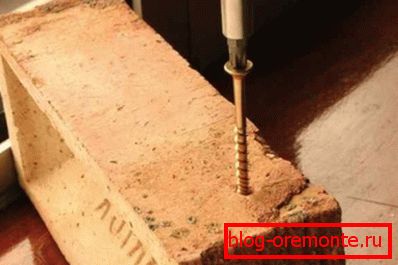Concrete screw - types and installation
One of the most commonly used materials in construction is concrete. The structures created from it are used in almost all types of buildings. Therefore, for the repair, replacement of doors and windows, you need to know how to properly use a screw for concrete – nage and other special fasteners in this case.

General information
Although the modern construction market offers many options, self-tapping screws remain the most popular. They are core-pointed screws, the head of which has a cross-cut. Such a fastener is highly durable, which allows it not to bend or collapse under the influence of large loads.
Tip: when choosing self-tapping screws for concrete, which can be of the most varied length, proceed from the features of the concrete structure, incl. her weight.

Material
For the manufacture of screws can be used various materials that are selected depending on the type and conditions of use.
The main ones are:
- carbon steel;
- stainless steel;
- brass.
The common feature of each of them is high strength, and their price is not much different from each other.
The most common fasteners, the material for the manufacture of which served as carbon steel. Such screws have an additional protective coating that protects them from oxidation and other types of effects.

In order not to get confused in the types of coating for carbon steel, it is necessary to remember their color designation:
| Silver | In this case, the protective coating is a layer of zinc. Such screws can be equally effectively used for various jobs. |
| Yellow | Such fasteners are also treated with zinc, but they have a slight drawback in comparison with silver ones. It can only be used while working with concrete indoors. |
| The black | Another type of coating for carbon steel screws is oxidized. They are recommended to be used during the internal works in the rooms differing in normal indicators of humidity of air. |
Tip: concrete fasteners are perfect for work with brick foundations.

Kinds
Self-tapping screws can be bundled with dowels or simply screwed into the surface without them.
Due to the different features of the elements, they can be divided into three main groups, each of them is characterized by different properties:
- Universal medium pitch. The range of lengths of such fasteners is in the range of 12-220 mm, and diameter - 3-6 mm. They can be used equally effectively with or without dowels for concrete in the bases made of brick (concrete).

- Herringbone Thread. The length range is similar to the first group, and the diameter can be in the range of 3-8 mm. These elements are fixed only using dowels. To create a hole for the dowel, use a drill whose diameter is equal to the diameter of the dowel. The depth of drilling should be 3-5 mm longer than the last, and the screw should have a similar length.

- Dows - variable thread type with notches. Such elements differ in various lengths (in the range of 70–200 mm) and a constant diameter of 7.5 mm. It is used without dowel. For its installation it is necessary to drill a 6 mm hole O in the base and a length exceeding the length of the screw by 10-15 mm.
Features of the use of screws
It is very easy and convenient to use such fasteners. The instruction recommends using a dowel inserted into a pre-prepared hole. The use of fasteners without it is allowed in cases where large loads on the screw are not expected.
If you choose the second option, you can cheat a little. To increase the service life of such an attachment, you can use the “folk method” - put a piece of a match into the hole. This will visibly tighten the position of the screw in the hole and save it from loosening.

Before screwing a screw into a concrete wall, you may need various tools:
- drill;
- screwdriver;
- perforator.
However, do not forget about the simplest version - the usual screwdriver. It is important to remember that the screwing in of power tools is carried out at high speed. This may adversely affect the hole itself, it may expand slightly, which will cause the screw to loosen.
The choice of a screwdriver depends on the notch applied to the head of the fastener. In most cases, it is cruciform or figured, so it is recommended to use just this type of tool.

And finally, the screws can be driven into the wall with a hammer.
But this can only be done in two situations:
- if you do not have a special tool for drilling holes;
- when the fastener is not subjected to significant loads during operation, for example, it will hold the picture.
Conclusion
Before the invention of self-tapping screws, every home craftsman invented his own method of fastening on concrete. Now the task is significantly simplified and allows you to solve problems in the minimum amount of time. The industry offers fasteners for every “taste and color”, turning home repairs into pleasure. The video in this article will help you find additional information on this topic.